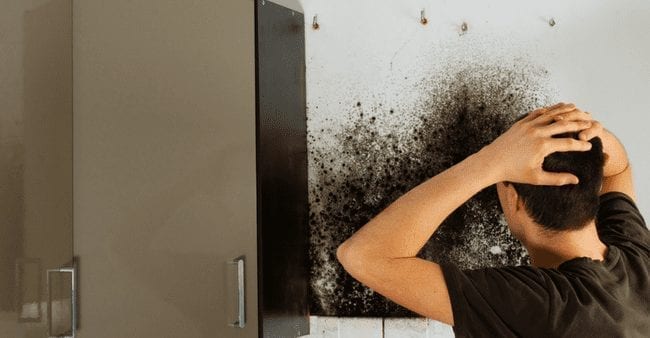Detecting Concealed Water Line Leaks: 6 Ingenious Hacks
Detecting Concealed Water Line Leaks: 6 Ingenious Hacks
Blog Article
Do you find yourself on the lookout for details on Detecting hidden plumbing leaks?

Early discovery of dripping water lines can mitigate a prospective disaster. In addition to saving you money, it will certainly reduce the irritation and frustration. The moment you locate a leak, calling your plumber for repair work is the most effective solution. Some tiny water leaks may not be noticeable. If you can not detect it with your naked eyes, right here are some hacks that help.
1. Examine the Water Meter
Every house has a water meter. Inspecting it is a proven manner in which aids you discover leaks. For starters, shut off all the water resources. Make sure no person will certainly purge, use the tap, shower, run the cleaning machine or dishwashing machine. From there, most likely to the meter and also watch if it will certainly change. Since nobody is using it, there must be no movements. That suggests a fast-moving leakage if it relocates. Furthermore, if you detect no changes, wait an hour or 2 and inspect back once more. This implies you might have a slow leak that might even be below ground.
2. Check Water Consumption
Assess your water costs and also track your water consumption. As the one paying it, you should see if there are any kind of inconsistencies. If you find sudden changes, despite your consumption coinciding, it indicates that you have leaks in your plumbing system. Keep in mind, your water bill should drop under the exact same range on a monthly basis. An unexpected spike in your bill shows a fast-moving leakage.
At the same time, a constant rise on a monthly basis, despite the same routines, shows you have a slow-moving leak that's additionally slowly rising. Call a plumber to completely examine your building, particularly if you really feel a warm location on your floor with piping beneath.
3. Do a Food Coloring Examination
When it comes to water intake, 30% comes from bathrooms. If the shade somehow infiltrates your dish during that time without flushing, there's a leak in between the tank as well as dish.
4. Asses Exterior Lines
Do not neglect to inspect your exterior water lines as well. Examination faucets by attaching a yard tube. Ought to water permeate out of the link, you have a loose rubber gasket. Change this and make sure all links are tight. It will assist get it professionally examined and preserved each year if you've got a sprinkler system. One small leak can throw away lots of water and also increase your water costs.
5. Examine as well as Evaluate the Circumstance
Homeowners should make it a behavior to examine under the sink counters and also also inside cabinets for any type of bad odor or mold growth. These 2 red flags show a leakage so timely attention is required. Doing regular examinations, also bi-annually, can conserve you from a significant issue.
If you know your home is currently old, keep a watchful eye on your heating systems, pipes, pipes and so on. Look for stainings and weakening as the majority of home appliances and pipelines have a life span. They will certainly also normally wear away because of tear and put on. Do not wait for it to intensify if you suspect dripping water lines in your plumbing system. Call an expert plumber right now so you don't wind up with a horrible mess in your house.
Early detection of dripping water lines can minimize a prospective catastrophe. Some tiny water leakages might not be visible. Checking it is a proven method that assists you discover leakages. One small leak can lose lots of water and spike your water costs.
If you presume leaking water lines in your plumbing system, do not wait for it to intensify.
WARNING SIGNS OF WATER LEAKAGE BEHIND THE WALL
PERSISTENT MUSTY ODORS
As water slowly drips from a leaky pipe inside the wall, flooring and sheetrock stay damp and develop an odor similar to wet cardboard. It generates a musty smell that can help you find hidden leaks.
MOLD IN UNUSUAL AREAS
Mold usually grows in wet areas like kitchens, baths and laundry rooms. If you spot the stuff on walls or baseboards in other rooms of the house, it’s a good indicator of undetected water leaks.
STAINS THAT GROW
When mold thrives around a leaky pipe, it sometimes takes hold on the inside surface of the affected wall. A growing stain on otherwise clean sheetrock is often your sign of a hidden plumbing problem.
PEELING OR BUBBLING WALLPAPER / PAINT
This clue is easy to miss in rooms that don’t get much use. When you see wallpaper separating along seams or paint bubbling or flaking off the wall, blame sheetrock that stays wet because of an undetected leak.
BUCKLED CEILINGS AND STAINED FLOORS
If ceilings or floors in bathrooms, kitchens or laundry areas develop structural problems, don’t rule out constant damp inside the walls. Wet sheetrock can affect adjacent framing, flooring and ceilings.
https://www.servicemasterbyzaba.com/blog/how-to-detect-water-leakage-in-walls/

I recently found that piece of writing about Leaking water lines when surfing around the search engines. Don't hesitate to take the opportunity to share this content if you liked it. I treasure reading our article about Leaking water lines.
Pipe burst? Phone now! Report this page